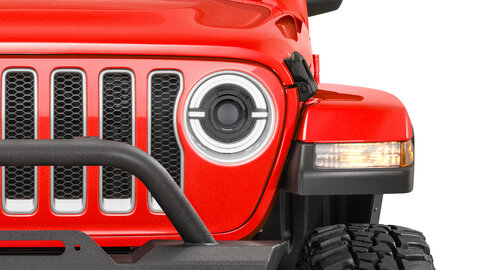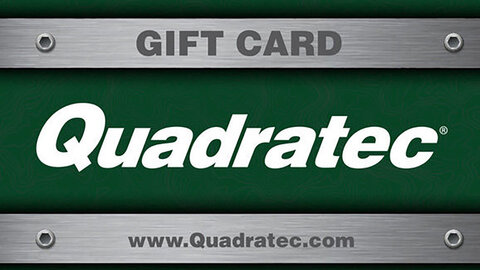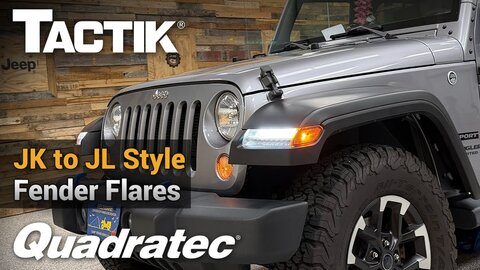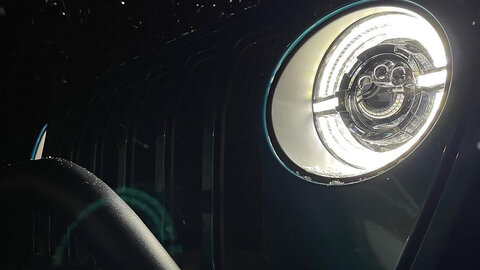by Matt Konkle
Managing Editor
Some cover the whole thing with canvas or plastic. Some choose to go naked. And others, well, others remove the piece completely.
A Jeep’s spare tire.
See, that Jeep is one of a few vehicles that actually have an exterior-mounted spare. Somewhat because of size. Somewhat because this makes the tire easier to access.
So the question arises: why would someone want to remove that tire from their rear tailgate? Especially if they are avid off-roaders.
Well, here are some of the top reasons behind this notion, and what it means for Jeep enthusiasts.
Oversized Upgrades Clash with OEM Mounts
When lifting a Jeep and upgrading those tires to 35-inches (or bigger), the stock tailgate suddenly looks a bit flimsy. Sure, you can add a heavier-duty rear bumper/spare tire carrier combo that will take up that weight, but many simply remove the tire, rather than risk a stressed hinge or cumbersome reinforcements.
Weight Savings & Smarter Handling
Speaking of 35-inch or larger tires, have you ever tried to lift one of those things? They are certainly not feathers. Removing a larger, full-size spare from the vehicle reduces its weight and can lead to peppier acceleration, as well as improved on- and off-road performance.
Ease of Rear Access
Without a bulky spare tire on the tailgate, rear access becomes fluid—especially useful for those with rooftop tents or rear storage platforms. Additionally, the tailgate now becomes way easier to open and close, which can be especially helpful for off-roaders who encounter off-camber stops.
Clean Look, Better Visibility
Not only are 35-inch or larger tires heavier than stock versions, they also block rear views. So if this is something that makes you uncomfortable, but you still want larger rubber, then a spare tire delete will surely be helpful to keep that view unobstructed.
Avoiding Theft & Damage
Despite their size and weight, spare tires are surprisingly vulnerable—three lugs and they can be gone—specially in urban or trailhead parking. Removing the spare eliminates a theft target and is a low impact way to protect your gear.
Reduced Wind Drag and Slight MPG Gain
No, the removal of a spare tire won’t turn your Jeep into a 50 miles-per-gallon gas sipper. However, that protruding rear tire does create some aerodynamic drag, so splitting off the extra bulk can add minor but meaningful fuel economy gains—something daily drivers appreciate over long trips.
More Space for Gear or Overland Mods
Without the spare, the rear tailgate area frees up and allows the possibility for creative builds. Jeepers have installed everything from water tanks and auxiliary batteries to air compressors and even mini rear winches—all neatly tucked into the ‘spare spot.’
Economic Sense for Matching Upgrades
Upgrading to larger off-road tires means you’ll likely need to purchase a matching spare—and that can run thousands when you add in a reinforced carrier. Thus, some owners simply skip it to save on both gear and mounting hardware.
No Flats? No Problem (During Daily Driving)
Let’s face it—many Jeep owners daily drive without ever needing that spare. When city or commuter usage dominates, leaving it at home or in the garage simply makes sense. Bonus: you still have better fuel economy and reduced tailgate weight.
----
Overall, removing a Jeep’s spare isn’t about neglect; it is a calculated customization. Whether you’re tightening up the look, lightening up the ride, or are simply running a tighter budget, chances are that spare tire isn’t permanent. But if you do take off that spare, just make sure you have a smart backup, or someone you can call should you encounter a flat.
Related Articles:
All-Terrain vs. Mud-Terrain Tires: Choosing the Right Tire for Your Adventure






















